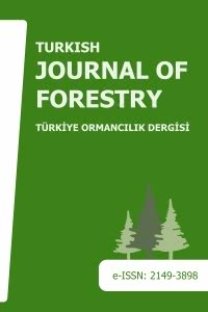Geri kazanılmış sekonder liflerin yeniden kullanılması üzerine bir inceleme
Kağıt yapısının ana iskelet elemanı selülozdur. Kullanımın tamamlayarak atık durumuna gelmiş kağıtların yapısında bulunan selülozun geri kazanılmasıyla yeniden kağıt üretiminde değerlendirilmesi mümkündür. Geri kazanılmış selüloz liflerinden (sekonder lif) yeniden kağıt üretimi esnasında, geleneksel odun hamurundan kağıt üretimine göre bazı farklı uygulamalar gereklidir. Zira daha önce kurumuş ve yeniden kağıt üreti,minde kullanılan selülozun yapısı modifiye olmuştur. Sekonder liflerden yeniden üretilen kağıtların kalite ve direnç özellikleri odun hamurundan üretilenlere göre belirgin seviyede düşmektedir. Geri dönüşüm işlemleriyle selülozun yapısında meydana gelen değişiklerin bilinmesi, kağıt fabrikasyonu esnasında bazı ilave işlemlerle fiziksel ve optik kalite düşmeleri belli sınırlar içersinde tutulabilir.
A study on recovered secondary fiber for reuse
Cellulose is the main structural elements of paper. However, cellulose from waste paper products can be recover and reuse for papermaking. Moreover, paper manufacturing from recovered cellulose fibers have some differences compare to conventional paper production from pulp. Because cellulose has alreday dry and rewetted in that seconder pulp compared to wood pulp, so the paper strength and physical properties have decreased considerably compared to wood pulp. For improving this situation, it is important to know cellulose properties during recyling. Hence further treatments should be done to improve these quality decreases some level.
___
- Atalla, R.H. 1992. Structural Change in Cellulose during papermaking and Recycling. In: Rowell, et.al. Eds. Material Interaction Relevant to recycling of WoodBased Material: Proceeding of Materials Research Society Symposium; 1992 April 27-29, San Francisco, CA.
- Bhat, G.R., Heitmann, J.A. and Joyce, T.W. 1991. Novel techniques for enhanching the strength properties of secondary fiber. Tappi J.74(9), 151-157.
- Brancato A. A. 2008. Effect of progresive recycling on cellulose fiber surface properties, Ph.D Theses, Georgia Institute of Tecnology, GA, USA 116 s.
- Biermann, C.J. 1993. Essentials of Pulping and Papermaking. Academic Press, Inc. San Diego, USA. Cathie, K., Guest, D. 1991. Waste Paper, Pira International, Antony Rore Ltd. England. 134 s.
- Clark, J. d'A. 1978. Pulp Technology and Treatment of Paper. Miller Freeman Publications, Inc. San Francisco, USA.
- Ellis, R.L., Sedlachek, K.M. 1993. Recycled-versus virginfiber characteristic: a comparison. In : Secondary Fiber Recycling. Spangenberg, R.J. Ed. Tappi Press. Atlanta, Georgia.
- Gurnagul, N. 1995. Sodium hyroxide addition during recycling; effects on fiber swelling and sheet strength. Tappi Journal, 78(12); 119.
- Howard, R.C., Bichard, W. 1992. The basic effects of recycling on pulp properties, Journal of Pulp and Paper Sci.: 18(4): J151.
- Kleinau, J.H. 1990a. Contaminants, In: Secondary fibers and non wood pulping, Kocurek, M.J. (Series editor), Tappi Press, Atlanta, GA.
- Kleinau, J.H. 1990b. Processes and their equipment, In: Secondary fibers and non wood pulping, Kocurek, M.J. (Series editor), Tappi Press, Atlanta, GA.
- Kırcı, H. 2009. Kağıt Hamuru Endüstrisi Ders Notları, KTU Orman Fakültesi Yayınları, Trabzon.
- McKee, R.C. 1971. Effect of repulping on sheet properties & fiber characteristics, Paper Trade Journal: 155 (5): 34. Minor, J. 1994. Hornification. its origin and meaning. Progress in Paper Recycling: 3 (2): 93-95.
- Paavilainen, L. 1990. Importance of particle size; fiber length and fines; for the characterization of softwood kraft pulp. Paperi ja Puu: 72(5): 516.
- Reese, A. R. 1991. OCC consumption expected to grow as cost of virgin fiber increases in paper recyling, strategies, economics, and technology, Ken L. Patrick, (Ed), s. 71-75, Miller Freeman Inc., San Francisco, USA.
- Scott, W.E., Abbott, J.E., 1995. Properties of Paper: an Introduction, (Eds.) Tappi Press, Atlanta, GA. 174 s.
- Smook, G.A.,1994. Handbook for Pulp and Paper Technologists. Angus Wilde Publications, Canada, 419 s.
- Spangenberg, R.J. 1993. Secondary Fiber Recyling, (Editor), Tappi Press, Atlanta, GA.
- Şahin, H.T. 2007. Kullanılmış atık Kâğıtların yeniden kağıt üretiminde kullanılması, Orman Mühendisliği, 44 (7-9): 18-21.
- Şahin, H.T. 2009. Atık kağıt Özelliklerinin geri dönüşüme etkisi. Artvin Orman Fakültesi Dergisi, 10 (2): 117-123.
- Şahin, H.T. 2013. Kağıt geri dönüşüm işlemlerinin selülozun yapısında meydana getirdiği değişimler üzerine bir inceleme. Süleyman Demirel Üniversitesi Orman Fakültesi Dergisi, 14:1, 74-80.
- Üner, B., Şahin, H.T. 2004. Geri dönüşümde yaş pres ve kurutmanın lif özelliklerine etkisi, Süleyman Demirel Üniversitesi Orman Fakültesi Dergisi, Seri A, 1, 145- 158.
- Wistara, N., Young, R.A. 1999. Properties and treatments of pulps from recycled paper. Part I. Physical and chemical properties of pulps, Cellulose 6 (4): 291-324
- Wistara, N., Zhang, X.J., Young, R.A. 1999. Properties and treatments of pulps from recycled paper. Part II. Surface properties and crystallinity of fibers and fines, Cellulose 6 (4): 325-348.
- ISSN: 1302-7085
- Yayın Aralığı: Yılda 2 Sayı
- Başlangıç: 2000
Sayıdaki Diğer Makaleler
Tuğba LEHTİJÄRVİA DOĞMUŞ, Ayşe Gülden KAYAB ADAY, Funda OSKAYC, Asko LEHTİJÄRVİD
Geri kazanılmış sekonder liflerin yeniden kullanılması üzerine bir inceleme
NİLÜFER YAZICI, Süleyman KARAGÜL
Sakarya ili mobilya imalatçılarında iş sağlığı ve iş güvenliği üzerine bir inceleme
Bartın İli örneğinde yeşil alanların ulaşılabilirliğinin değerlendirilmesi üzerine bir araştırma
Ercan GÖKYER, Bayram Cemil BİLGİLİ
Tuğba DÜZENLİ, SEMA MUMCU, SERAP YILMAZ, Ali ÖZBİLEN
Peyzaj tasarımda yeni bir süreç: GeoTasarım
